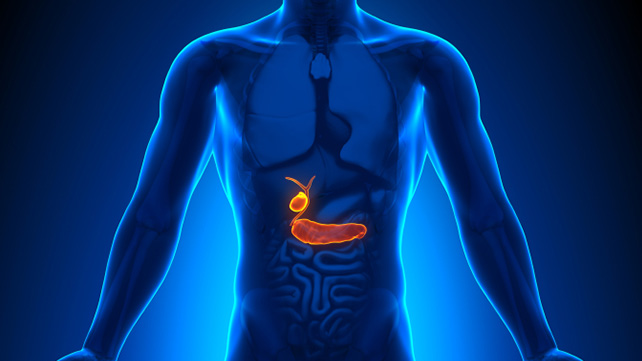If you have gallstones, they need to be removed because they can clog the gallbladder, and a large one could block your one of the bile ducts. However, instead of removing just the stones in these instances, the entire gallbladder is usually surgically removed. Gallstones can be painful, and not getting the proper treatment for them could have serious consequences for your health.
Gallstone Symptoms
Gallbladder problems can sometimes be difficult to detect, and there are seldom symptoms. However, under certain conditions, the main symptom is pain. The gallbladder is located on the right side of the upper abdomen, just under the liver. If you do feel pain because of gallstones, you will feel pain on the upper right side of your abdomen, just under the breast, and it sometimes spreads around your side to the back.
The pain associated with gallstones can range from mild to so severe that it causes you to double over. If you are having severe pain, you should go to the hospital as soon as possible to have the pain diagnosed. You may need to have your gallbladder removed right away if gallstones are responsible for the pain.
Biliary Colic Symptoms
Most of the time gallstones do not cause symptoms and they are not found until an x-ray has been done in that area of the body. Usually, when pain occurs, and is sometimes accompanied by nausea, it is because one of the bile ducts has been blocked by a gallstone. This condition is called biliary colic and it causes fluid build-up, which in turn causes the ducts and the gallbladder to become distended.
There is no precursor to biliary colic—it occurs suddenly and the pain is often severe. It is a constant pain and it can last anywhere from fifteen minutes to four hours or more. If the pain lasts for four to five hours, then a complication called cholecystitis has probably developed. This condition occurs when the gallbladder has become inflamed.
The remedy for cholecystitis is the surgical removal of the gallbladder. A laparoscopic cholecystectomy is typically performed to remove the gallbladder. It involves placing small incisions on the right side of the abdomen, after which the surgeon uses a machine to cut up the gallbladder and remove it. Your general practitioner or the hospital will search for a gallbladder specialist in Singapore to perform the surgery.
Gallbladder Complications
Although cholecystitis can remedy itself if the gallstone blocking one of the bile ducts moves and is no long obstructing it, the problem can easily recur. In addition, other complications can occur with gallstones. If the gallbladder becomes infected, then cholangitis can develop, which is an infection that can cause high fever, high white blood cell count, and the development of an abscess or sepsis in the liver.
Gangrene can also develop, which can cut the blood supply off, weaken the gallbladder and cause a rupture. If the gallbladder ruptures, the infection can spread into the abdomen. If you do develop severe pain near the location of your gallbladder, see a doctor right away for treatment.

